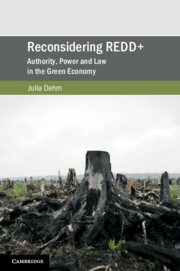Book contents
- Reconsidering REDD+
- Cambridge Studies on Environment, Energy and Natural Resources Governance
- Reconsidering REDD+
- Copyright page
- Contents
- Acknowledgements
- Abbreviations
- Introduction
- 1 Background to REDD+
- 2 Asserting Global Authority over the Carbon Sequestration Potential of Forests
- 3 Actualising Authority through Public and Private Law
- 4 Responsibility and Capacity
- 5 Scale, Multilevel Governance and the Disaggregation of Property Rights in REDD+
- 6 REDD+ at the ‘Local’ Level
- 7 Conclusion
- Bibliography
- Index
4 - Responsibility and Capacity
Recasting North–South Difference
Published online by Cambridge University Press: 13 May 2021
- Reconsidering REDD+
- Cambridge Studies on Environment, Energy and Natural Resources Governance
- Reconsidering REDD+
- Copyright page
- Contents
- Acknowledgements
- Abbreviations
- Introduction
- 1 Background to REDD+
- 2 Asserting Global Authority over the Carbon Sequestration Potential of Forests
- 3 Actualising Authority through Public and Private Law
- 4 Responsibility and Capacity
- 5 Scale, Multilevel Governance and the Disaggregation of Property Rights in REDD+
- 6 REDD+ at the ‘Local’ Level
- 7 Conclusion
- Bibliography
- Index
Summary
This chapter explores a key effect of REDD+, namely that it recasts how the North–South differentiation in the climate regime is understood and how questions of responsibility and capacity for climate mitigation are conceptualised. This has the effect of enabling the countries of the Global North – who bear the greater responsibility for GHG production – to evade necessary action to ameliorate the climate crisis. Simultaneously, an emphasis on the presumed lack of capacity of Global South countries to act on climate disruption has provided a justification or authorisation for greater international intervention in the name of assisting them to act on climate change. This chapter examines debates over the contentious principle of common but differentiated responsibility and respective capacities in the climate regime and explores changes in how the principle is interpreted and enacted over time. It also shows how the adoption of flexibility mechanisms within the regime transformed how differentiation is operationalised in practice. Finally, this chapter shows how the discourse of ‘capacity building’ in the climate regime has facilitated the establishment of regulatory and legal infrastructure to support neoliberal markets, especially through REDD+-readiness programs.
Keywords
- Type
- Chapter
- Information
- Reconsidering REDD+Authority, Power and Law in the Green Economy, pp. 212 - 255Publisher: Cambridge University PressPrint publication year: 2021
- 1
- Cited by



